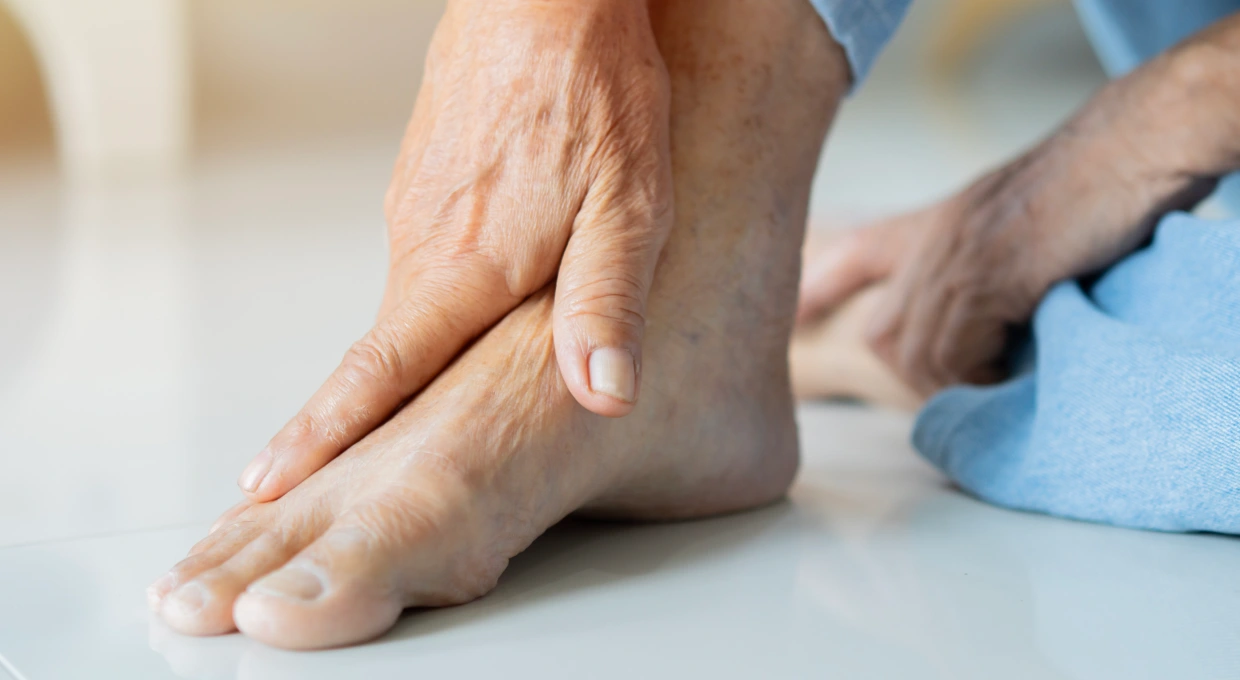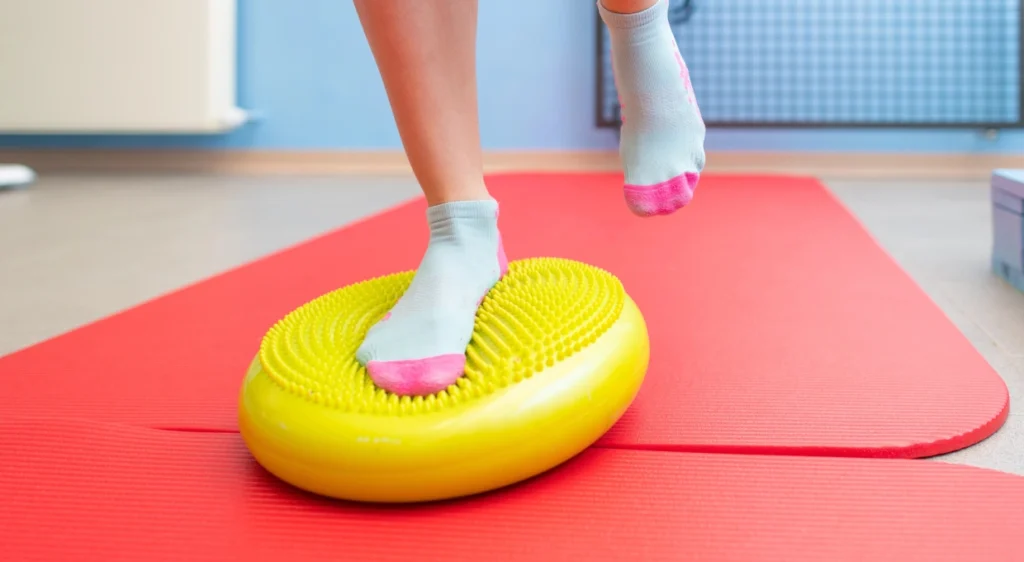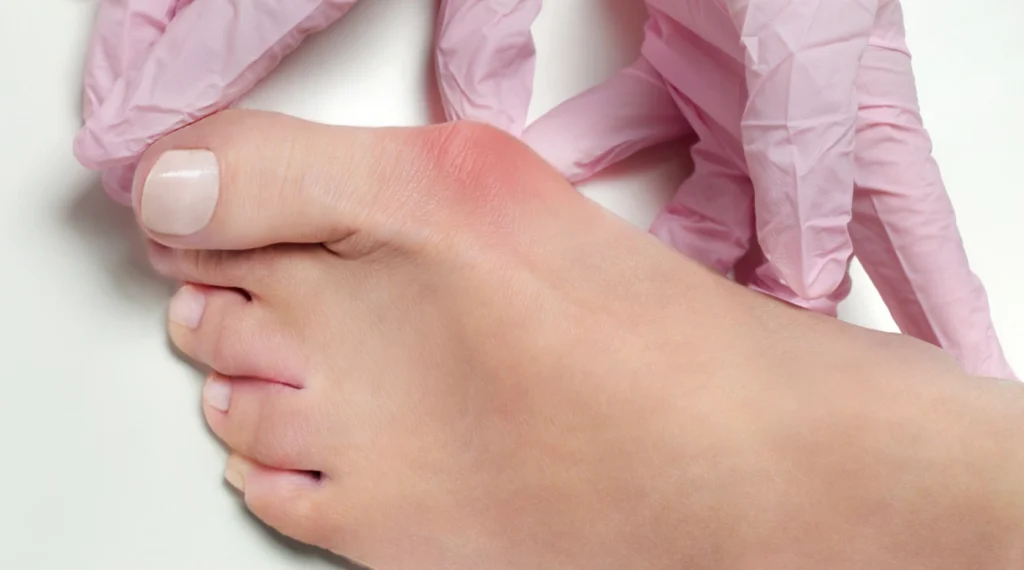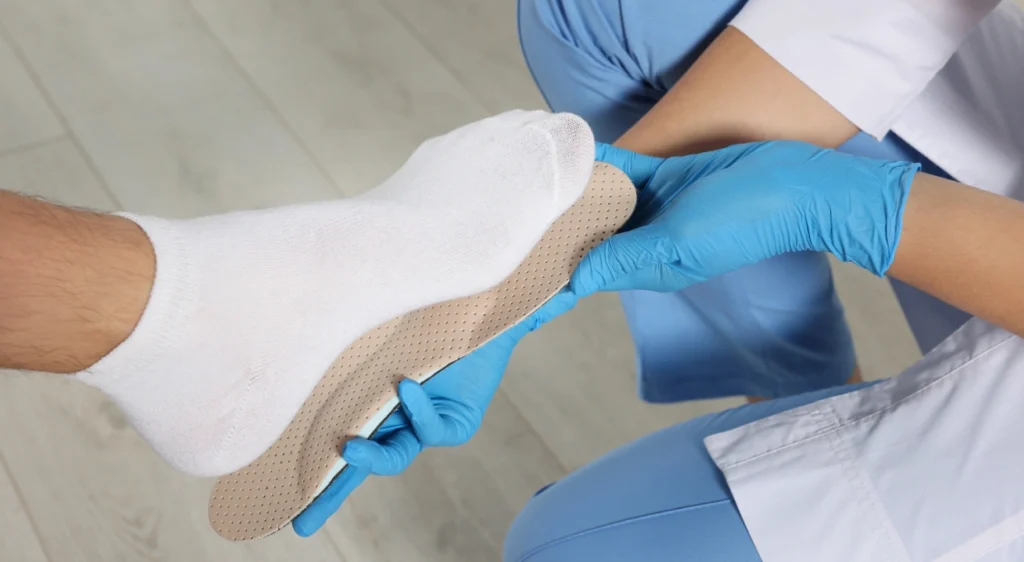Recovery after bunion surgery is one of the aspects that most worries patients who are considering undergoing this procedure. Doubts about how long it will take to return to normal walking, whether the process will be painful or when it will be possible to return to work are completely understandable. The good news is that, especially with minimally invasive or percutaneous surgery techniques, the recovery process has evolved considerably, allowing patients to return to normal life much sooner than was possible with traditional techniques.
In this article we will deal in an exhaustive manner with everything related to the postoperative period following bunionette surgery, from the first few days to complete recovery. It is important to keep in mind that each patient is unique and times may vary according to various factors such as age, general health, the type of surgical technique used and the degree of deformity corrected. However, knowing what to expect at each stage of the process helps enormously to face the recovery with confidence and peace of mind.
Fundamental Differences in Recovery by Surgical Technique
Before delving into the recovery process, it is essential to understand that not all bunion surgery is the same, and therefore, neither is the recovery process. The surgical technique used makes a substantial difference in recovery times, postoperative pain and limitations during the rehabilitation process.
Traditional open surgery, which has been the standard for decades, requires incisions of between five and ten centimeters to access the bony structures of the foot. This approach, although effective, involves greater aggression to the surrounding soft tissues and frequently requires the use of osteosynthesis material such as screws or plates to fix the bones in their new position. As a consequence, the healing process is longer, the postoperative pain more intense and the need for more extensive immobilization. Patients operated on by this technique usually need several weeks before being able to support the operated foot and full recovery times can extend up to a year or more.
In contrast, percutaneous or minimally invasive surgery represents a significant advance in the surgical treatment of hallux valgus. This technique is performed through millimeter incisions of only two or three millimeters, using specialized instruments and guided by fluoroscopy (X-rays in real time). The motorized drills make it possible to make the bone cuts necessary to correct the deformity without the need to open the tissues extensively. In most cases, no osteosynthesis material is required, which eliminates the risks associated with these implants and greatly simplifies the recovery process.
At Clínica San Román, where we have been specializing in percutaneous foot surgery for more than forty years, we have found that this technique offers very significant advantages in terms of recovery. Patients experience less postoperative pain, less swelling, virtually unnoticeable scars and a much faster return to their daily activities. For this reason, this article focuses specifically on recovery after percutaneous surgery, which is the technique we routinely use in our clinic.
The First Days: What to Expect Immediately After the Procedure
The day of surgery marks the beginning of the recovery process, and it is natural to feel some apprehension about what the first few hours after surgery will be like. In the case of percutaneous bunion surgery, the procedure is usually performed under regional anesthesia supplemented by conscious sedation, which means that the patient remains comfortable and relaxed throughout the procedure without experiencing any pain. The duration of the surgery ranges from forty-five to ninety minutes, depending on the complexity of the case and whether one or both feet are operated on.
One of the most outstanding advantages of this technique is that it is an outpatient surgery, which means that the patient can return home the same day of the intervention. Approximately ninety-seven percent of our patients are discharged from the hospital a few hours after surgery, once the effects of anesthesia have worn off and we have verified that everything is proceeding normally. When leaving the clinic, the foot will be protected with a functional bandage that allows a certain degree of mobility and a special post-surgical shoe with a rigid sole that facilitates ambulation and protects the operated area.
Pain during the first few days is generally mild or moderate, being on a scale of two out of ten in most cases. This level of pain is perfectly controllable with conventional analgesics such as paracetamol or non-steroidal anti-inflammatory drugs such as ibuprofen. It is essential to follow the prescribed analgesic regimen regularly during the first few days, without waiting for the pain to appear before taking the medication, since it is much more effective to prevent pain than to treat it once it has set in.
During the first week, it is essential to keep the foot elevated whenever possible, especially when sitting or lying down. Elevating the foot above the level of the heart significantly helps reduce swelling and improves circulation, both of which contribute to a faster and more comfortable recovery. The application of local cold by cryotherapy is also very beneficial during these first days. It is recommended to apply ice wrapped in a cloth or use cold gel packs for periods of fifteen to twenty minutes every two to three hours, always protecting the bandage to keep it dry.
First Recovery Phase: The First Six Weeks
Weeks One and Two: Adaptation and Initial Care
The first two weeks after surgery are a period of adaptation in which the body begins the process of tissue healing and bone healing. During this time, it is completely normal to experience some degree of swelling in the operated foot, which is typically more pronounced at the end of the day or after periods of activity. This swelling is part of the natural healing process and should not be a cause for concern as long as it is not accompanied by other alarming symptoms.
One of the most frequent questions we are asked by patients is whether they will be able to walk after the operation. With the percutaneous surgery technique, the answer is yes: immediate loading is allowed from the first day, although obviously with certain precautions. The special post-surgical shoe is specifically designed to allow ambulation while protecting the operated area and distributing the loads appropriately. However, during these first weeks it is important to limit ambulation to what is strictly necessary, avoiding walking long distances or standing for prolonged periods.
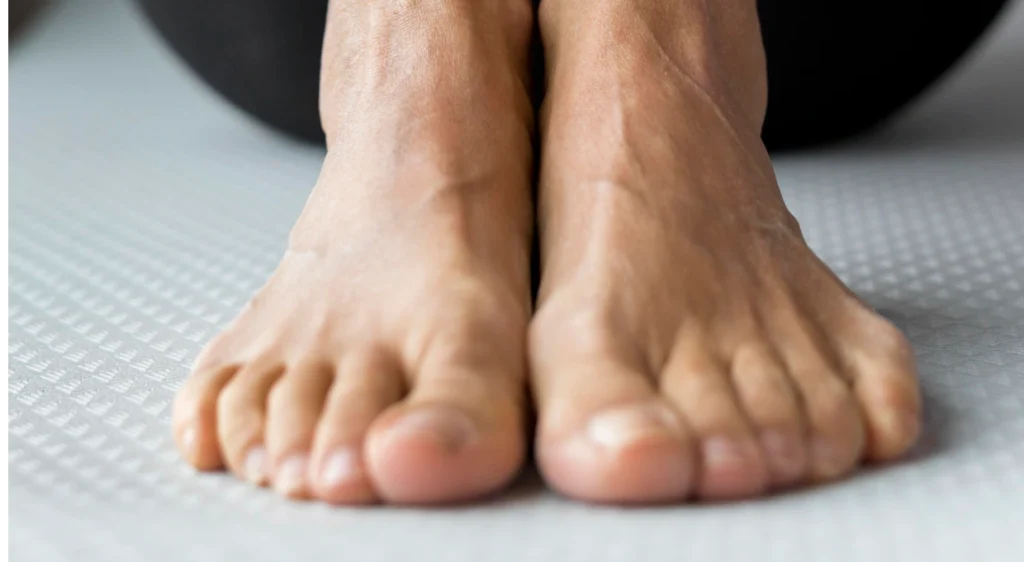
Basic daily activities such as personal hygiene can be performed normally, although it is essential to keep the dressing dry. Many patients wonder when they will be able to shower, and the answer is that they can do so from the first day, but keeping the foot out of the shower or protecting it adequately with waterproof bags. It is preferable to opt for seated showers for the first few days for comfort and safety. Once the initial bandage is removed, usually between the second and third week, it will be possible to wet the foot normally.
During this initial period, many people who perform sedentary jobs or who are able to telecommute begin to resume their work activity. In fact, approximately eighty-eight percent of our patients who are able to work from home do so before the third week. However, this requires proper organization of the work space to keep the foot elevated during the workday and frequent breaks to mobilize the foot and apply cold if necessary.
Weeks Three through Six: Beginning Active Rehabilitation
Between the second and third week, the first complete medical check-up is usually performed. In this consultation the bandage is changed, the state of the scars and the process of bone consolidation is carefully evaluated by means of control X-rays. This is also the moment when, if everything evolves correctly, the specialized physiotherapy program is started, which is one of the fundamental pillars for an optimal recovery.
The rehabilitation program that we develop at Clínica San Román is specifically designed to maximize the functional recovery of the operated foot. Manual lymphatic drainage is one of the first techniques to be applied, as it is extraordinarily effective in reducing the residual edema that usually persists during these weeks. This technique, performed by specialized physiotherapists, consists of gentle and rhythmic maneuvers that promote lymphatic circulation and accelerate the reabsorption of accumulated fluids in the tissues.
At the same time, the low power laser or MLS laser is incorporated, a technology that has been scientifically proven to accelerate tissue healing processes, reduce inflammation and modulate pain. Laser therapy sessions are completely painless and their effects are cumulative, so it is important to maintain regularity in their application. Passive mobilization of the big toe is also started during this phase, always in a gentle and progressive manner, with the aim of recovering joint range of motion and preventing stiffness, one of the complications we want to avoid.
As the weeks progress, the physical therapy program is intensified by incorporating new techniques. Neuromuscular electrostimulation helps maintain the tone of the intrinsic foot muscles, which may have lost some strength during the period of decreased activity. Myofascial manual therapy focuses on releasing adhesions that may form in the soft tissues and improving the mobility of all structures of the foot. The goal during these weeks is to restore approximately eighty percent of normal joint range, a milestone that is critical for full functional recovery.
Also during this phase, work is introduced with the baropodometry platform, an advanced technology that allows precise analysis of the distribution of plantar pressures during gait. This analysis is essential to re-educate the gait pattern, to ensure that weight is properly distributed between the different areas of the foot and to detect any inadequate compensations that may be developing. Gait re-education is a process that requires time and specialized supervision, but it is essential to achieve an optimal long-term functional outcome.
Phase Two: Recovery of Full Functionality
Months Two and Three: Transition to Normalcy
Between the second and third month after surgery a very significant transition takes place: most patients can already abandon the post-surgical shoe and start using normal sports shoes. This transition should be done gradually, starting with wide last shoes with flexible materials and good cushioning. It is important to avoid narrow-toed shoes, heels or rigid footwear, since the foot is still in the process of adaptation and needs space and flexibility.
This is also the period when most patients fully return to work, even those whose jobs require prolonged periods of standing. However, it is important to make this reincorporation in a progressive manner, starting with reduced working hours if possible and gradually increasing the working hours. Jobs that involve intense physical activity or require frequent bending may need a few additional weeks before they can be resumed as normal.
Driving is another aspect that generates many doubts in patients. If the left foot has been operated on and the vehicle has an automatic transmission, driving can be resumed after three or four weeks. However, if the surgery was performed on the right foot, which controls both the accelerator and the brake, it is necessary to wait a minimum of six weeks. In any case, follow-up data from our patients indicate that approximately seventy-two percent are driving before the fortieth day, although it is always essential to have the doctor’s explicit authorization before getting back behind the wheel.
As for physical activity, during the second month it is already possible to begin with low-impact exercises. Walking progressively longer distances, up to five or six kilometers without discomfort, is an excellent exercise that helps to strengthen the foot and improve circulation. Swimming is especially recommended during this phase, since it allows the muscles and cardiovascular resistance to be worked without subjecting the foot to impacts, in an environment that also favors drainage and reduces residual inflammation. Bicycling, both stationary and outdoors on flat terrain, can also be incorporated during this period.
Months Four to Six: Full Return to Sport
From the fourth month, provided that the evolution has been favorable and with the authorization of the medical team, the practice of higher intensity sports can begin. For runners, this is the time to gradually resume running, starting with short sessions of fifteen or twenty minutes on soft surfaces such as dirt or grass, and very gradually increasing both the duration and intensity of training. It is essential to listen to the body’s signals and not to force if discomfort appears.
Sports involving abrupt changes of direction, such as paddle tennis, tennis or soccer, can be started around the fifth month, initially under the supervision of the physiotherapist and starting with low intensities. These sports place greater stress on the structures of the foot due to turns, sudden stops and changes of pace, so it is important to approach their reintroduction gradually and cautiously.
Most patients are discharged from the hospital between the fourth and sixth month after surgery, when full functional recovery has been achieved and they can perform all their usual activities without limitations. However, it is important to understand that although functionally the foot is completely recovered, the process of definitive bone consolidation can take up to twelve months. During this time it is essential to maintain certain precautions such as wearing appropriate footwear, continuing with strengthening exercises and attending scheduled periodic check-ups.
Factors Influencing the Recovery Process
The speed and quality of recovery after bunion surgery does not depend solely on the surgical technique employed, but is influenced by multiple factors, some of which can be modified by the patient himself to optimize his recovery. Understanding these factors and acting on those within our control can make a significant difference in the final outcome.
Strict adherence to the physiotherapy program is probably the most important factor in the quality of recovery. Patients who regularly attend their rehabilitation sessions, perform the prescribed home exercises and follow the recommendations of the physiotherapy team experience significantly better and faster recoveries. On the contrary, those who neglect this aspect usually present greater residual stiffness, slower functional recovery and, in some cases, suboptimal results that could have been avoided with proper rehabilitation.
The patient’s nutritional and metabolic status also plays a fundamental role. A balanced diet rich in quality proteins, vitamins and minerals provides the body with the nutrients necessary for tissue repair and bone consolidation. It is especially important to maintain adequate levels of vitamin D and calcium, which are essential for bone health. In patients with documented deficiencies of these nutrients, supplementation may be necessary and should be indicated by the physician.
Smoking is one of the most important negative factors in any healing process. Nicotine and other components of tobacco produce vasoconstriction, i.e., narrowing of the blood vessels, which reduces the supply of oxygen and nutrients to the healing tissues. This results in slower healing, increased risk of complications and worse functional outcomes. It is strongly recommended to stop smoking at least two weeks before surgery and to remain abstinent throughout the recovery process.
Diabetes, especially when not well controlled, can significantly affect the healing process. High blood glucose levels interfere with healing processes and increase the risk of infections. Diabetic patients should maintain optimal metabolic control throughout the process, with close monitoring of their blood glucose levels and adjustment of treatment if necessary. The patient’s age also influences recovery times, which are somewhat longer in people over sixty-five years of age, although this does not mean that excellent results cannot be achieved in this age group.
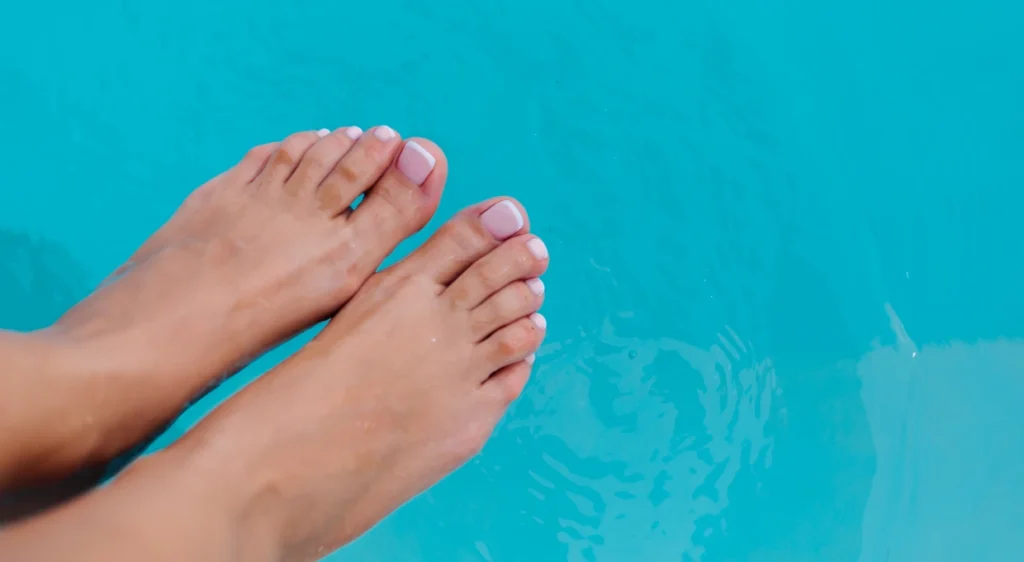
Potential Complications and Their Prevention
Although percutaneous bunion surgery has very low complication rates, it is important for patients to know what the possible complications are and, above all, how they can actively contribute to preventing them. Transparency in this regard is part of a doctor-patient relationship based on trust and allows the patient to participate in an informed way in his or her own recovery process.
Postoperative infection is one of the most feared complications in any surgery, although its incidence in percutaneous foot surgery is very low, less than one percent. This low rate is due to several factors: minimal incisions reduce tissue exposure, rigorous sterile technique is maintained throughout the procedure, and antibiotic prophylaxis is administered when indicated. The patient can help to further minimize this risk by keeping the dressing clean and dry for the first few weeks, not handling the wounds and scrupulously following the indicated hygiene guidelines. Signs such as progressive redness extending beyond the operated area, foul-smelling discharge, persistent fever or pain that increases rather than decreases should be reported immediately to the medical team.
Joint stiffness is another potential complication that can affect functional outcome if not properly addressed. After any surgery involving a joint, there is a risk that the joint will lose some of its mobility if specific work is not done to restore it. For this reason, early and sustained physiotherapy is absolutely essential. Mobilization exercises, both those performed in physiotherapy sessions and those that the patient should practice at home, are the best prevention against stiffness. Specialized manual therapy helps to release adhesions and maintain the flexibility of all periarticular tissues.
Persistent pain beyond the expected time frame is a problem that, although infrequent, may occur in some cases. Multimodal pain management from the onset, combining conventional analgesics with physical therapies such as low power laser, cryotherapy and treatment of potential myofascial trigger points, is often effective in preventing chronification of pain. In cases where significant pain persists beyond the first few weeks, a thorough evaluation is essential to identify and treat the underlying cause.
Delayed bone healing is a rare complication that can prolong recovery time. Factors such as smoking, nutritional deficiencies, poorly controlled diabetes or certain medications can interfere with the normal healing process. Prevention involves optimizing these modifiable factors and, in cases where a delay in consolidation is identified, it may be necessary to use complementary therapies such as magnet therapy, which has demonstrated its ability to stimulate the formation of new bone.
Practical Tips for Optimizing Recovery
Beyond following medical instructions and attending physical therapy sessions, there are many practical day-to-day aspects that can greatly facilitate the recovery process and make it more bearable. Preparing the home environment before surgery can make a big difference in comfort during the first few weeks.
Organizing the usual space so that all necessary items are easily accessible avoids unnecessary trips during the first few days. Having extra cushions to keep the foot elevated when sitting or lying down, having reusable ice packs ready in the freezer and organizing medications in a visible way so as not to forget to take them are simple details that contribute significantly to well-being. As far as clothing is concerned, opting for wide pants or skirts that do not compress the foot and loose cotton socks is much more comfortable during the first few weeks.
Personal hygiene requires some temporary adaptations. During the first weeks, while the bandage must be kept dry, it is more practical to opt for seated showers keeping the foot out of the bathtub or protecting it adequately with specific waterproof covers for this purpose. Once the initial bandage has been removed, the foot can be wet normally, although it is advisable to avoid prolonged baths or saunas until the healing process is completely consolidated. Careful drying of the areas between the toes after hygiene helps prevent secondary skin problems.
For patients who are able to telework, organizing the workspace ergonomically is essential. Having a comfortable chair, a footrest or cushions to keep the foot elevated to the appropriate height and easy access to cryotherapy for periodic cold applications makes the workday much more comfortable. Scheduling regular breaks every hour to get up, gently mobilize the foot and change position helps prevent edema and stiffness.
The psychological aspect of recovery should not be underestimated. It is completely normal to feel temporarily limited or even somewhat frustrated during the first few weeks. Maintaining realistic expectations, understanding that recovery is a gradual process that requires time and patience, and not comparing yourself with other patients whose recovery times may be different, helps to maintain a positive attitude. Having family support and not hesitating to ask for help when needed greatly facilitates adaptation to the temporary limitations imposed by the postoperative period.
Long-Term Perspective and Maintenance of Results
Once the recovery process is complete and the patient has been discharged from the hospital, many patients wonder what long-term care should be taken to preserve the results of the surgery and prevent recurrence of the bunion. Although surgical correction is definitive in the sense that the changes made to the bony structures are permanent, there are factors that can promote recurrence if not properly addressed.
The use of appropriate footwear is probably the most important factor in preventing recurrences. Wide-fitting shoes that do not compress the toes, made of flexible materials that conform to the shape of the foot and with soles that provide adequate cushioning, should become the norm. Narrow-toed shoes or high heels, which were probably contributing factors in the development of the original bunion, should be limited to very occasional occasions and short periods of time. When it is necessary to wear them, alternating them with comfortable shoes and not wearing them for prolonged periods helps minimize their negative impact.
In patients with underlying biomechanical alterations, such as flat feet or pes cavus, which contributed to the development of the bunion, the continued use of custom orthotic insoles is essential to prevent recurrence. These insoles help correct abnormal load distribution during gait, reduce stress on the first metatarsal and maintain proper foot alignment. The insoles should be checked and renewed periodically, since with use they lose their properties and their corrective capacity.
Maintaining a healthy body weight also contributes to the preservation of long-term results. Being overweight increases the load on all structures of the foot, including the first metatarsal and the big toe joint. In overweight patients, gradual weight loss through a balanced diet and regular exercise not only benefits overall health but also reduces mechanical stress on the operated feet.
Intrinsic foot muscle strengthening exercises, which can be learned during the rehabilitation process, should be maintained on a regular basis over the long term. Dedicating a few minutes several days a week to these exercises helps to maintain foot strength and stability, helping to preserve the correction achieved with surgery. Likewise, maintaining good flexibility of the posterior leg chain through regular stretching of the calf and soleus muscles helps to avoid biomechanical compensations that could favor recurrence.
Comparison of Results and Recovery Times
To provide a clear and objective view of the differences in recovery times between the different surgical techniques, it is useful to present comparative data based on our clinical experience of more than four decades in foot surgery.
| Recovery Aspect | Traditional Open Surgery | Percutaneous Surgery (Clínica San Román) |
|---|---|---|
| Support of the operated foot | 2-3 weeks without load | Immediate loading from day 0 |
| Reincorporation teleworking | 4-6 weeks | 88% before week 3 |
| Driving a vehicle | 8-10 weeks | 72% before day 40 |
| Use of normal footwear | 12 weeks or more | 6-8 weeks |
| Low impact sports | 4-5 months | 6-8 weeks |
| Running and impact sports | 6-8 months | 3-4 months |
| Complete medical discharge | 8-12 months | 4-6 months |
These data reflect the experience accumulated in our clinic and demonstrate the significant advantages of the percutaneous technique in terms of speed of recovery. However, it is essential to emphasize that these are average times and that each patient is unique, with individual variations depending on multiple factors such as age, general state of health, compliance with the rehabilitation program and the specific complexity of each case.
Conclusion
Recovery after percutaneous bunion surgery is a gradual but generally quick and painless process when compared to traditional surgical techniques. The key to achieving optimal recovery lies in several fundamental pillars: scrupulously following the indications of the medical team, maintaining a firm commitment to the physical therapy program, being patient and respecting the biological healing and consolidation times, and maintaining fluid communication with the professionals supervising the process.
At Clínica San Román, our experience of more than forty-five years specializing in percutaneous foot surgery has allowed us to develop optimized recovery protocols that seek to achieve the best functional results in the shortest possible time, always prioritizing the safety and well-being of the patient. The data we have presented throughout this article reflect real results of our patients and demonstrate that minimally invasive surgery represents a very significant advance in the surgical treatment of hallux valgus.
If you are considering bunion surgery or have questions about your recovery process, we invite you to contact us. Our team will be happy to answer all your questions and accompany you every step of the way to a successful recovery and a life free of the limitations imposed by bunions.
